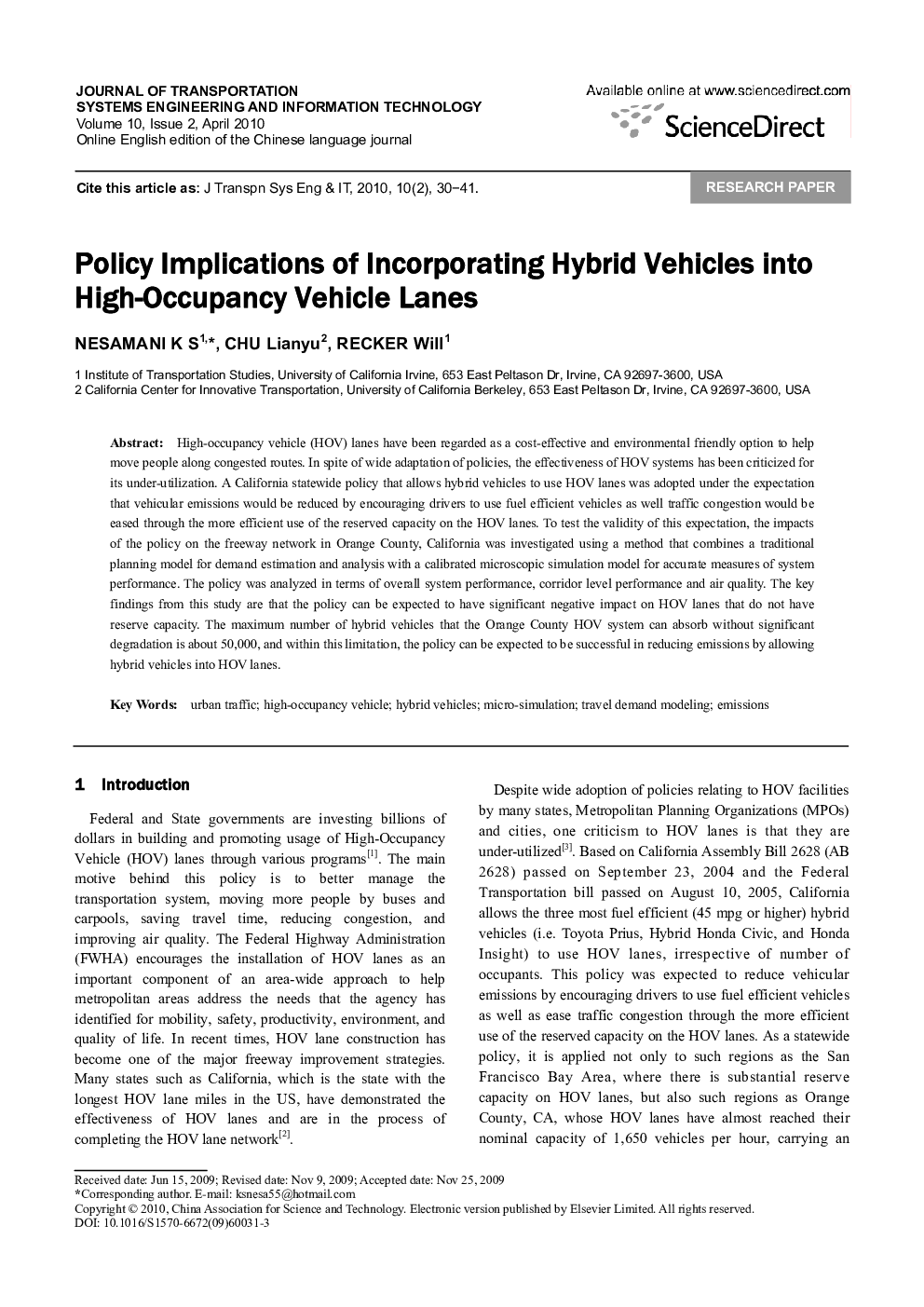| Article ID | Journal | Published Year | Pages | File Type |
|---|---|---|---|---|
| 108645 | Journal of Transportation Systems Engineering and Information Technology | 2010 | 12 Pages |
High-occupancy vehicle (HOV) lanes have been regarded as a cost-effective and environmental friendly option to help move people along congested routes. In spite of wide adaptation of policies, the effectiveness of HOV systems has been criticized for its under-utilization. A California statewide policy that allows hybrid vehicles to use HOV lanes was adopted under the expectation that vehicular emissions would be reduced by encouraging drivers to use fuel efficient vehicles as well traffic congestion would be eased through the more efficient use of the reserved capacity on the HOV lanes. To test the validity of this expectation, the impacts of the policy on the freeway network in Orange County, California was investigated using a method that combines a traditional planning model for demand estimation and analysis with a calibrated microscopic simulation model for accurate measures of system performance. The policy was analyzed in terms of overall system performance, corridor level performance and air quality. The key findings from this study are that the policy can be expected to have significant negative impact on HOV lanes that do not have reserve capacity. The maximum number of hybrid vehicles that the Orange County HOV system can absorb without significant degradation is about 50,000, and within this limitation, the policy can be expected to be successful in reducing emissions by allowing hybrid vehicles into HOV lanes.
摘要在拥堵的高速公路上,合乘车辆(HOV)车道是一种高效环保的交通方式。虽然HOV车道广受采纳,但该系统的利用效率受到质疑。加州在全州范围内采取了一项允许混合动力车辆使用HOV车道的政策,以期通过鼓励驾驶员使用省油汽车来减少尾气排放,同时通过更有效地利用HOV车道的剩余通行能缓解交通拥挤。加州橘县高速公路的路网用于研究该政策的影响及有效性。研究方法结合使用传统的规划模型来估计交通需求及校准的微观仿真模型来评价系统性能。通过对系统整体性能、车道服务水平和空气质量三方面的分析,结论表明此政策对在高峰时段没有剩余通行能力的HOV车道带来严重的负面影响。为保证HOV车道服务质量不明显下降还能减少排放,该政策最多允许50 000辆在加州注册的混合动力车辆使用HOV车道。
